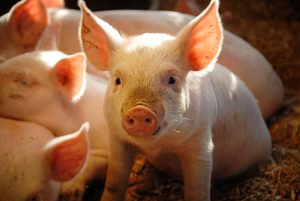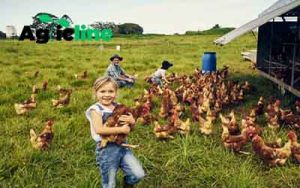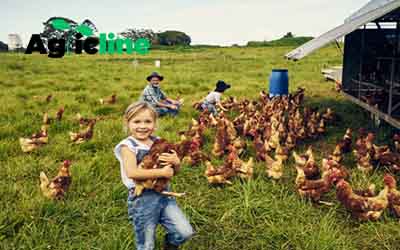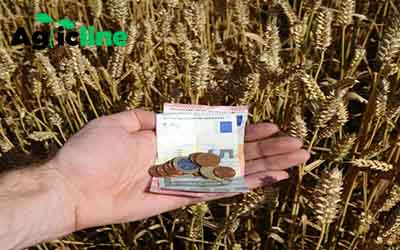The journey to start your own small farm with animals is an adventure that blends the dreams of pastoral life with the realities of hard work and dedication.
So, if you vision of nurturing animals, tending to their needs, and benefiting from the bounty they provide is a compelling one, not just for the self-sufficient lifestyle it promises, but also for the deeper connection it offers to the rhythms of nature.
Whether you’re drawn to the idea of fresh eggs from your chickens, the joy of milking your goats, or the satisfaction of raising healthy livestock, starting a small farm can be a fulfilling endeavor for you most especially considering the current world economic situation.
The benefits of having a small farm are numerous; it allows for a sustainable way of living, offers control over your food sources, and contributes positively to the local ecosystem.
However, it’s not without its challenges. Success in this venture requires a solid foundation built on careful planning and research.
Before I proceed to unravel the world of small farming, it’s crucial to understand what it entails.
From selecting the right animals for your farm to navigating legal requirements and managing daily operations, each step is vital.
This piece of content will provide you with a comprehensive overview of how to start your own small farm with animals, covering everything you must know.

Therefore, if you are ready, let’s go.
How to start a small farm with animals
- Planning Your Small Farm
- Legal and Financial Considerations
- Setting Up Your Farm
- Daily Management and Care
- Marketing and Selling Your Products
1. Planning Your Small Farm
Starting a small farm requires more than just a love for animals and the countryside; it necessitates a well-thought-out plan that encompasses your goals, the animals you wish to raise, and how you intend to sustain your farming venture.
Begin by asking yourself why you want to start a small farm. Is it for personal satisfaction, a desire to live more sustainably, or are you looking at it as a commercial venture? Your goals will significantly influence decisions such as the type of animals you choose, the size of your farm, and the infrastructure you’ll need.
It’s important to set realistic goals that reflect your resources, time, and commitment level.
Choosing the Right Animals
The choice of animals is pivotal to the success of your farm. Consider factors like land size, local climate, and the market demand if you’re planning to sell products.
Each type of farm animal has its specific needs, benefits, and challenges:
- Chickens
Chicken are often recommended for beginners due to their relatively low maintenance and quick return on investment through egg production.
- Goats
They are versatile animals that can provide milk, meat, and even help with weed control, but they require good fencing to keep them contained.
- Cows
They offer dairy and beef options but require more land, substantial feed, and care.
- Pigs
Pigs can be raised for meat, but they need sturdy pens and have specific dietary requirements.
Creating a Business Plan
Even if your farm is primarily for personal use, drafting a business plan can provide clarity and direction.
For those looking to profit from their farm, a business plan is essential.
Business plan should cover:
- Budgeting: Estimate startup costs, including land, animals, feed, and equipment, and ongoing expenses to ensure financial viability.
- Marketing and Sales: Identify potential markets for your products, whether local farmers’ markets, direct sales to consumers, or online platforms. Plan how you will reach your target customers.
- Operations: Outline the daily tasks required to care for your animals and manage your farm, including feeding, cleaning, and health care routines.
2. Legal and Financial Considerations
Once you’ve laid out a plan for your small farm, it’s crucial to navigate the legal and financial waters that come with starting and running a farm.
Before you bring the first animal onto your property, it’s essential to understand the local zoning laws and regulations that apply to your farm.
Zoning laws can affect where you can locate your farm, the types of animals you can have, and the size of your operation. You may need to obtain specific permits or licenses to operate legally.
Here’s what to consider:
- Check Local Zoning Regulations
- Obtain Necessary Permits
- Animal Welfare Standards
Financing Your Farm
Starting a farm requires capital. From purchasing animals to setting up fences, barns, and other necessary infrastructure, the initial investment can be significant.
Here’s how to manage and secure financing for your farm:
- Explore Financing Options: Look into agricultural loans, grants, and other financing options available for small farms. Government agencies, agricultural cooperatives, and private lenders may offer programs designed to support small-scale farmers.
- Personal Savings: Many small farmers start with their savings, reinvesting profits back into the farm for growth. This approach can help avoid debt but requires careful financial management.
- Budgeting: Create a detailed budget that covers startup costs, operational expenses, and emergency funds. Being realistic about your financial needs and potential income is vital for long-term sustainability.
Managing Farm Finances
- Keep Detailed Records
- Plan for Seasonal Variations
- Seek Professional Advice
3. Setting Up Your Farm
With your goals defined and legal and financial plans in place, the next crucial step is setting up your farm.
This involves selecting a suitable location, preparing the land for your animals, and acquiring the necessary infrastructure and equipment.
Here’s how to get started on the right foot, creating a nurturing environment for your animals and a productive space for your farming operations.
Choosing and Preparing Land
The success of your farm is deeply rooted in the land you choose and how well you prepare it for your agricultural endeavors.
Consider the following when selecting and preparing your land:
- Assess Land Quality: Look for land with suitable soil, access to clean water, and appropriate climate for the animals you plan to raise.
The size of the land should accommodate your current plans and allow for future expansion.
- Prepare the Land: Depending on the type of animals you’ll be raising, you may need to clear land, fence in pastures, or construct sheltered areas to protect your animals from the elements.
- Water Access: Ensure there is reliable access to water. This might mean drilling a well, setting up rainwater collection systems, or ensuring that natural water sources are clean and accessible.
Acquiring Animals
Choosing the right animals is crucial for your farm’s success. Here’s what to keep in mind:
- Start Small: It’s wise to start with a small number of animals and gradually increase your herd or flock as you become more comfortable with farm management.
- Choose Healthy Animals: Purchase animals from reputable sources. Look for signs of good health and appropriate temperament. Consider genetic diversity to maintain a healthy, productive group.
- Quarantine New Arrivals: To prevent the spread of disease, quarantine new animals for a recommended period before introducing them to your existing stock.
Infrastructure and Equipment
- Shelter
- Fencing
- Feeding and Watering Equipment
- Health Care Equipment
4. Daily Management and Care
- Feeding and Nutrition
- Health and Wellness
- Breeding and Growing Your Herd/Flock
Feeding and Nutrition
Proper nutrition is vital for the health and productivity of your animals. Each species and breed has specific dietary needs that must be met to ensure they grow, reproduce, and stay healthy.
- Understand Nutritional Requirements
Research the dietary needs of the animals you’re raising. This includes the right balance of carbohydrates, proteins, fats, vitamins, and minerals.
- Develop a Feeding Schedule
Consistency is key. Establish a regular feeding schedule that meets the nutritional needs of your animals, considering their age, weight, and production needs (such as milk production or growth rates).
- Choose Quality Feed
Invest in high-quality feed to ensure your animals receive the necessary nutrients. Consider growing some of your feed, such as hay or fodder, to reduce costs and control quality.
Health and Wellness
Maintaining the health and well-being of your farm animals is essential. Preventative care, prompt attention to illnesses, and regular health checks can save costs and prevent loss.
- Routine Health Checks
Perform regular health inspections for signs of illness or distress. Familiarize yourself with common symptoms and know when to seek veterinary care.
- Vaccinations and Preventative Treatments
Keep up with recommended vaccinations and preventative treatments to protect your animals from common diseases and parasites.
- Emergency Preparedness
Have a plan in place for dealing with health emergencies. This includes having the contact information for a reliable veterinarian and a basic understanding of first aid for animals.
Breeding and Growing Your Herd/Flock
If part of your farm plan includes breeding your animals, it’s important to approach this aspect with knowledge and care.
- Understanding Breeding Practices
Educate yourself on the breeding practices specific to the animals you are raising. Consider genetic diversity, timing, and animal health in your breeding plans.
- Caring for Pregnant Animals and Offspring
Provide extra care and nutrition to pregnant animals and ensure you are prepared for the birthing process. After birth, both mothers and offspring will need additional care and monitoring.
- Record Keeping
Maintain detailed records of breeding dates, birth dates, health records, and genetic information.
This is crucial for managing your breeding program and ensuring the long-term health and productivity of your herd or flock.
5. Marketing and Selling Your Products
Once you’ve established your farm and are successfully managing the day-to-day operations, the next step is to turn your hard work into profit.
Marketing and selling your farm products effectively can make the difference between a hobby farm and a profitable business. Branding and Marketing Strategies
- Develop a Unique Brand
Your brand should reflect the unique aspects of your farm and its values. This includes a memorable name, logo, and messaging that communicates your farm’s story and the quality of your products.
- Utilize Online Platforms
In today’s digital age, having an online presence is essential. Create a professional website and engage with customers through social media platforms.
This can help you reach a wider audience and keep your customers informed about your products and farm happenings.
- Content Marketing
Share your farming journey through blogs, videos, and social media posts. This not only builds your brand but also creates a connection with your audience.
Educational content about your farming practices and the benefits of your products can add value and build trust with potential customers.
- Farmers’ Markets
Participating in local farmers’ markets is a great way to sell your products directly to consumers. It also allows you to build relationships with customers and receive immediate feedback.
- Community Supported Agriculture (CSA)
Starting a CSA program can provide a steady income stream while connecting directly with your community.
Members pay upfront for a share of the season’s harvest, which can help with cash flow and reduce marketing costs.
- Online Sales
Consider setting up an online store to sell your products. This can be particularly effective for value-added products like cheeses, meats, or specialty crops.
Ensure that you comply with all regulatory requirements for selling food products online.
- Wholesale to Local Businesses
Partnering with local restaurants, grocery stores, or specialty shops can provide a reliable outlet for your products. Focus on businesses that value local, sustainably produced farm goods.

Conclusion on how to start a small farm with animals
Starting and running a small farm with animals is a journey filled with challenges, learning experiences, and immense rewards.
From the initial planning and setup to the daily care of your animals and the marketing of your products, each step requires dedication, patience, and a willingness to adapt and learn.
The benefits of starting your own small farm with animals are as diverse as the farms themselves.
Beyond the tangible rewards of fresh produce and sustainable living, there’s the intangible joy of watching your farm flourish through your efforts.
It’s about the pride in knowing that you’re contributing to a healthier planet, providing for your family, and perhaps most importantly, living a life in tune with the values you hold dear.
Recommendations
How to become a farmer with no experience
5 Top Challenges faced by farmers in India
Disadvantages of rotational grazing
Best Water management technology in agriculture



